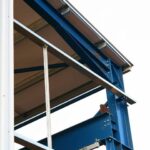8 Tips to Clean Out Eavestroughs
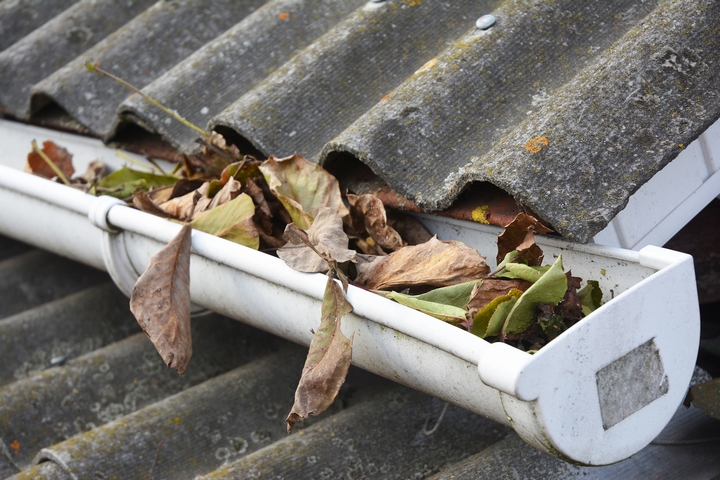
Even if you don’t see what’s inside your home’s eavestroughs when standing on the ground, you can be sure they need to be cleaned. Dead leaves, dirt, and other debris accumulate in them over time and will cause clogs.
Although you can hire a professional to clean your eavestroughs, you can also do it yourself. These tips for cleaning out eavestroughs will help you stay safe while you handle this important task.
Tip #1: Clean your eavestroughs before a storm
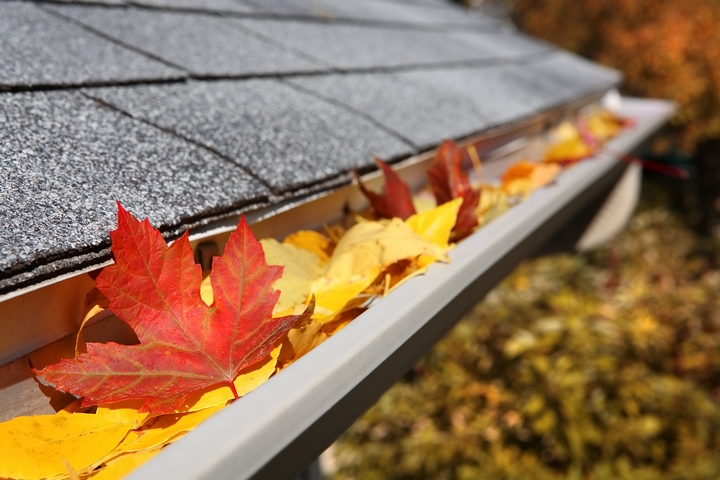
Ideally, you should do eavestrough cleaning at least twice yearly: in the spring and fall. You shouldn’t climb up there to clean your eavestroughs while it’s raining or with strong winds.
If you know a storm is coming soon, cleaning your eavestroughs before the storm is a good idea. The leaves and debris will be dry instead of wet and soggy.
Plus, if your eavestroughs are clogged, it’s best to unclog them before a big storm.
Tip #2: Get a sturdy and safe ladder
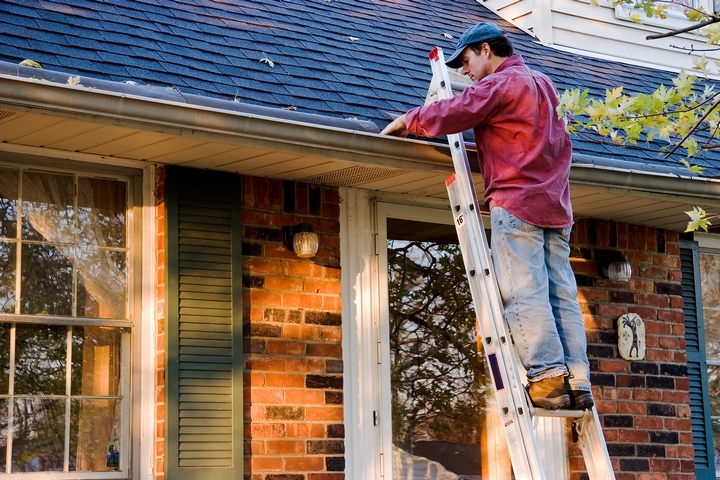
Trying to clean out your eavestroughs while standing on your roof is unsafe. You need to use a ladder, but not just any old ladder will do.
Be sure your ladder is sturdy and safe. An aluminum or fibreglass ladder would be ideal, as wooden ladders can get shaky. But avoid resting your ladder on the eavestroughs, as it could damage them.
You often must go down your ladder to move it from one spot to another. It can get annoying, but resist the temptation to lean past the ladder’s sides. Be sure to stay safe.
Tip #3: Protect yourself with the right equipment

Never clean out your eavestroughs with your bare hands. There could be bugs, dead animals, rotten leaves, and germs.
Wearing thick gloves will also protect your hands from scrapes and cuts. Wear protective goggles if something flies out of the eavestroughs and hits your face.
And make sure to wear practical and sturdy shoes. Sandals are not a good idea when you have to go up and down a ladder.
Tip #4: Clean your roof before cleaning your eavestroughs
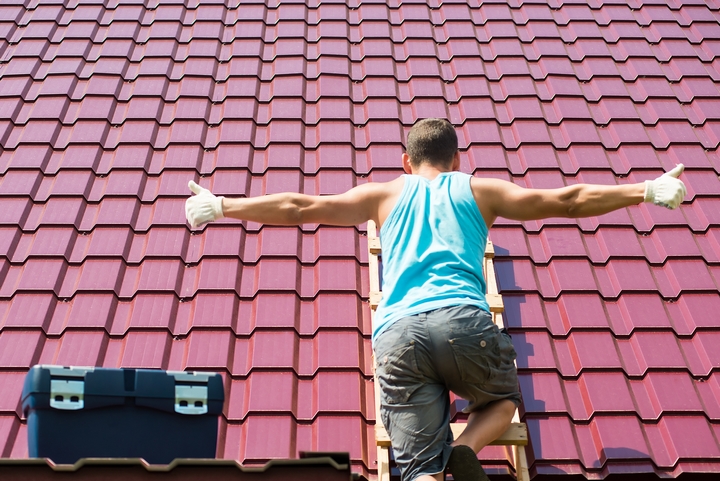
If your roof is dirty and needs a good cleaning, you must clean it before you clean your eavestroughs. If you start with your eavestroughs, any debris on your roof will slide down into them as soon as it rains or the wind blows hard.
Depending on your roof type, clean it with a pressure washer, spray it with chlorine bleach and water, and rinse it with just water after 20 minutes.
Tip #5: Use a bucket or a tarp to gather debris
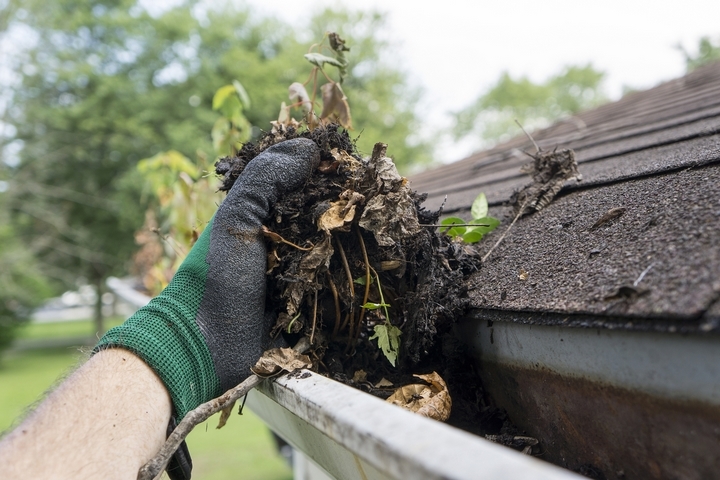
Don’t simply throw it on the ground as you remove the debris clogging your eavestroughs with your gloved hands. Instead, hang a bucket on your ladder to collect and dispose of the debris later.
Another solution would be to place a tarp on the ground so you can throw the debris on it. However, you would need to move the tarp regularly, almost as often as you’ll have to move your ladder.
Tip #6: Use a plastic scooping tool
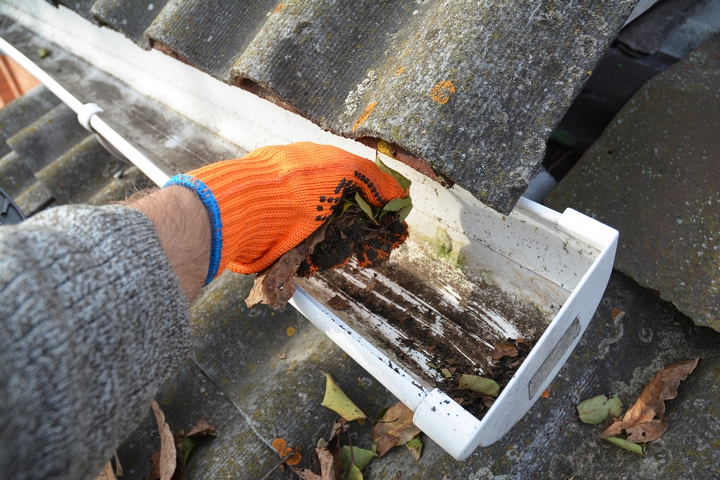
If your eavestroughs are old and ragged or you don’t want to use your hands, you might clean them with a scooping tool.
But be sure you use a plastic tool. A scooping tool made from metal could scratch your eavestroughs, and over time, they will rust and damage.
Tip #7: Clean your downspouts as well

When only small debris remains in your eavestroughs, you can flush them with a hose. As you do this, direct the hose’s water toward your downspouts so you can also clean them.
If your downspouts are clogged, high water pressure coupled with a bit of patience should unclog them.
If it doesn’t work, you might need to use a plumber’s snake to remove the debris preventing the water from reaching the bottom of your downspouts.
Tip #8: Consider scheduling regular cleanings with a professional
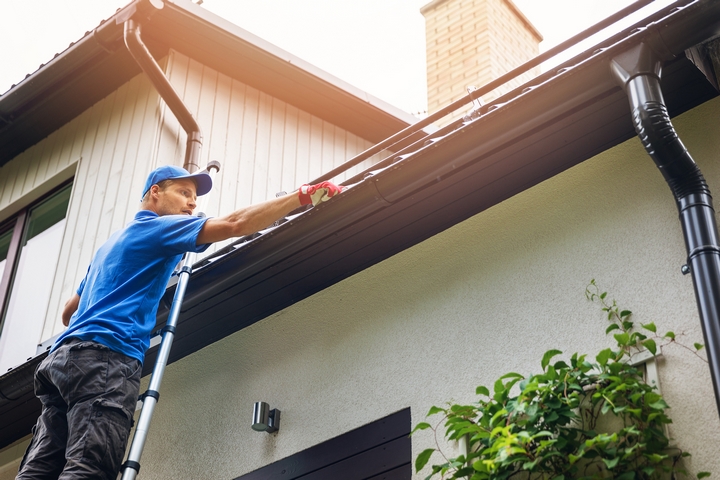
If these tips for cleaning out eavestroughs make you feel like you don’t want to do this task yourself, don’t hesitate to let a professional handle it.
Professionals are well equipped to clean eavestroughs and downspouts safely and efficiently. They might even be able to clean your roof for you, so you won’t have to worry about anything.
Simply schedule regular cleanings, and enjoy not climbing up and down a ladder while wearing thick gloves and protective goggles to scoop out nasty debris from your eavestroughs.



